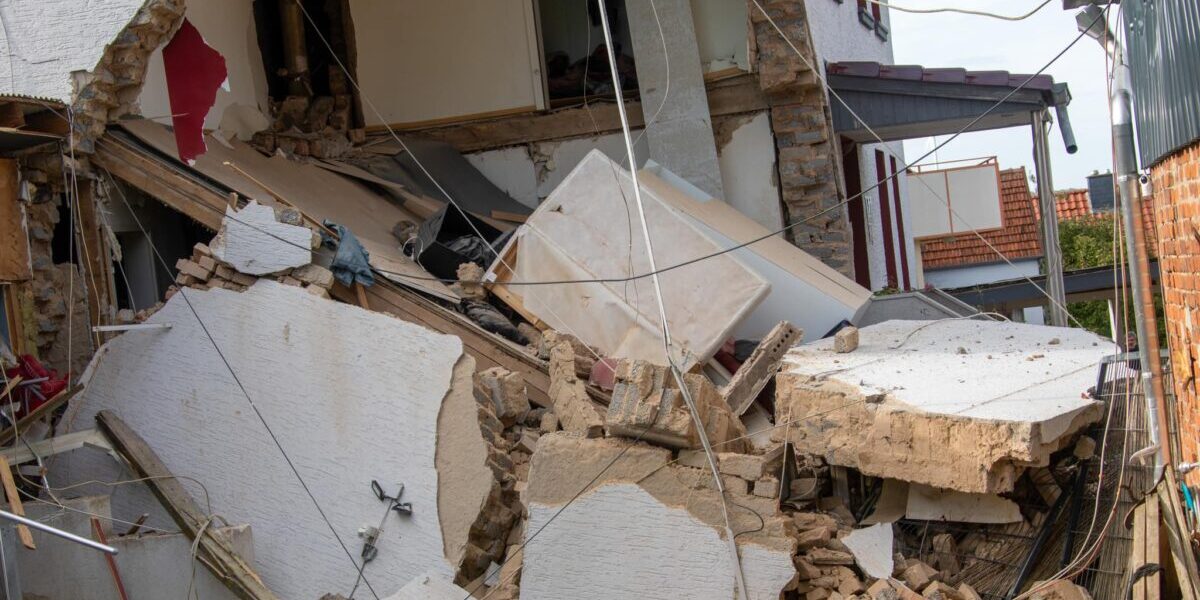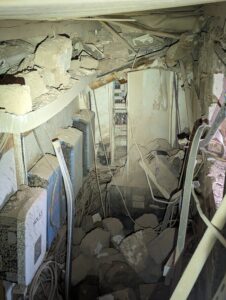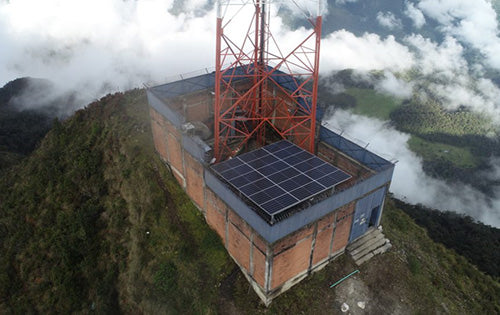https://www.pv-magazine.com/2023/10/30/cause-of-30-kwh-battery-explosion-in-germany-remains-unclear/
Investigators still uncertain about cause of 30 kWh battery explosion in Germany

Image: Vogelsberger Zeitung
Around three weeks ago, the explosion of a 30 kWh battery storage system caused a stir in Lauterbach, in the central German state of Hesse. The system owner is an electronics technician specializing in energy and building services, with 20 years of professional experience.
His home was destroyed in the explosion and it has not been habitable since. It is now in acute danger of collapsing, which is why police and insurance investigators do not dare to enter. This makes it impossible to determine the cause of the explosion with 100% certainty. The house will soon be demolished.
The homeowner told pv magazine that the battery energy storage system consisted of three battery packs from Shenzhen Basen Technology. He bought two in June 2022 and an additional one in June 2023 via the Alibaba platform. They are the “BR-48200B” and “MY-381” models, each with 10 kWh of capacity based on LFP technology housed in a 19-inch cabinet.
The battery system was coupled with a 15.47 kW photovoltaic system, which the homeowner was about to expand to 19.565 kW, and two different inverters: Victron’s Multiplus II 5000 and Solax X1 4.2. The cause of the explosion has yet to be clarified, and there were no electrical clues, according to the homeowner. Right before the accident, the battery’s state of charge (SOC) was 90.2% and the voltage stood at 52.41 V.
 After the explosion, the basement – which housed both the boiler and the battery system – was filled with white smoke. However, there were “hardly any signs of fire” near the battery storage unit, according to the homeowner. “The inverters on the other side of the room look like new,” he said.
After the explosion, the basement – which housed both the boiler and the battery system – was filled with white smoke. However, there were “hardly any signs of fire” near the battery storage unit, according to the homeowner. “The inverters on the other side of the room look like new,” he said.
Long after the incident, the homeowner noticed an odor that he described as the smell of lithium. He is now trying to determine whether it is makes sense to carry out safety tests outdoors for outdoor-use devices, as the smoke can evaporate and be overlooked. Now, the question is which gas caused the explosion, whether it originated inside or outside the battery, and how it happened.
pv magazine contacted two scientists, but the were unable to comment on the specific incident due to the ongoing investigation. Egbert Figgemeier, chair of aging processes and battery lifetime prediction at RWTH Aachen, said that it is conceivable that the electrolyte in the cells broke down and an internal short circuit ignited the gases.
“An external ignition source is not necessary,” said Figgemeier.
He described the white smoke as the decomposition products of the electrolyte, which can also contain dangerous gases. Soot formation is not necessarily to be expected, as many components of the cells could burn without leaving any residue at high temperatures. So-called thermal runaway could have preceded the explosion and may have been the trigger.
Popular content
Axel Durdel, a researcher at the Technical University of Munich, told pv magazine that in a “worst-case scenario,” an LFP battery could leak hydrogen, carbon dioxide, carbon monoxide, ethene, methane and other gases. There has been a lot of discussion about the possible formation of hydrogen with a subsequent explosion. In principle, this is possible, but whether the conditions for spontaneous combustion have been reached cannot be estimated, according to Durdel.
He said it is not known that batteries could cause such an explosion without a thermal reaction. In the case of thermal reaction, the internal pressure could increase due to undesirable side reactions, leading to an explosion and the release of hot gases.
“In the case of batteries with a lower energy density or a low state of charge, it is entirely possible that the gas does not ignite directly when it exits the battery, but that the ignition occurs through external ignition sources,” said Durdel.
In that case, there should be traces on the battery. However, this can no longer be verified because no one is allowed to enter the home due to the risk of collapse.
The storage owner has noted the problem of carrying out safety tests with lithium-ion storage devices outdoors. Figgemeier confirmed that such experiements are carried out in semi-open bunkers, rather than in closed rooms.
Durdel said that the standard-compliant safety tests for the lithium-ion cells are carried out almost exclusively in test rooms with appropriate filter systems. In principle, it is conceivable that gases could accumulate in the basement without an appropriate exhaust system. However, the scientist from the Technical University of Munich could not say whether this was sufficient for self-ignition.
Battery storage is generally safe when professionally installed and certified, with compatibility between systems ensured through testing and approval by inverter and battery manufacturers.
For integrated systems, this is done by the system integrator. The safety of these systems is evident in the low number of accidents reported among more than 1 million home battery storage installations in Germany. Monitoring systems, common among established manufacturers, further assist in the early detection of critical conditions.
This content is protected by copyright and may not be reused. If you want to cooperate with us and would like to reuse some of our content, please contact: editors@pv-magazine.com.




